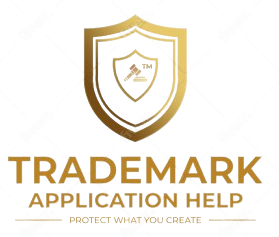Frequently Asked Questions
- Home
- /
- FAQ
TrademarkApplicationHelp.com – Frequently Asked Questions
No, you’re not legally required to register a trademark with the USPTO to have some protection — but registration gives you nationwide rights, a legal presumption of ownership, and the ability to sue for infringement in federal court. Without registration, your rights are limited to the geographic area where the mark is used. Federal registration is the strongest way to protect your brand.
The ™ symbol can be used with any brand name, logo, or slogan to show you’re claiming rights to it, even if it’s not registered. The ® symbol can only be used once your trademark is officially registered with the USPTO. Using ® without registration is illegal and can damage your credibility.
Start with the USPTO’s TESS database, but keep in mind — it only shows registered and pending marks. Similar or unregistered uses might still be a legal threat. Our attorney-led trademark search goes deeper, reviewing phonetic similarities, design marks, state trademarks, domain names, and more. We also assess actual legal risk — not just matches.
It depends. If their use is local and your use is national, you might be able to register — but if their rights predate yours and they can show prior use, they may be able to challenge your registration. A full clearance search and legal opinion is critical before you file.
The USPTO will issue an Office Action explaining why. You’ll have a chance to respond — but your response must be legally sound. We help clients overcome refusals based on likelihood of confusion, descriptiveness, specimen issues, and more. If you miss the response deadline or fail to fix the issue, your application will be abandoned.
On average, it takes 8 to 12 months from the date of filing — assuming no major issues. If the USPTO issues an Office Action, or if someone opposes your mark, the process may take longer. Intent-to-use applications can take even more time, depending on when you file the Statement of Use.
Strong trademarks are distinctive — meaning they aren’t just generic or descriptive of what you sell. The strongest marks are arbitrary (Apple for computers), fanciful (Kodak), or suggestive (Netflix). Weak marks are harder to register and enforce. We help you choose and strengthen your mark before filing.
You’re not required to use an attorney, but having one drastically increases your chances of success. Many self-filed applications get refused for technical or legal reasons that could have been avoided. A lawyer ensures proper filing, strategy, and response if anything goes wrong.
USPTO fees start at $250–$350 per class, plus legal fees if you work with an attorney. Most quality law firms offer flat-fee packages that include search, filing, and basic support. It’s an investment in brand protection — and far cheaper than dealing with infringement or rebranding later.
Don’t wait. Document the use, collect evidence, and talk to an attorney. We can issue a cease and desist letter, file a USPTO opposition, or pursue takedowns on platforms like Amazon. Ignoring infringement can weaken your rights over time.
If someone is using your name in domain names, social handles, or product listings, we can take action through cease and desist letters, UDRP domain complaints, DMCA notices, or platform-specific enforcement programs. Early action is critical.
Yes. The USPTO doesn’t police your rights — you do. If someone registers or uses a similar name and you don’t object, you risk weakening your brand. Our monitoring service alerts you to new threats and gives you early enforcement options.
Yes, if it functions as a source identifier (not just decoration). Slogans like “Just Do It” or “Because You’re Worth It” are registrable because they are used to identify the brand — not just as catchy phrases. We help determine if your slogan qualifies.
A specimen is proof that you’re using the trademark in commerce. For products, it could be a label or packaging. For services, it might be a website screenshot or ad. The USPTO is strict — if your specimen doesn’t meet the legal standard, your application could be rejected.
Trademarks protect brand names, logos, and slogans that identify your business. Copyrights protect original creative works like books, music, videos, and software. They’re separate types of intellectual property and require different protections.
The Madrid Protocol is a treaty that allows you to file one international application to seek protection in multiple countries. It’s efficient, but not always the best path. We help you choose between Madrid filings and national applications depending on your business goals.
It’s for businesses that haven’t started using a trademark yet but want to secure rights while preparing to launch. You must later submit a Statement of Use with proof of use. ITU gives you priority as of your filing date, even before you sell.
As soon as you see an infringing use that could confuse customers, harm your reputation, or dilute your brand. Acting quickly shows you’re policing your rights. Our letters are crafted to resolve issues professionally and legally.
Yes — but they require separate filings. A word mark protects the name across fonts and designs. A logo mark protects the specific graphic design. We often file both to ensure full brand coverage.
Your registration could be canceled. If caught early, you may have a grace period. If not, you’ll need to refile — and risk losing protection. Our portfolio management service tracks renewals and ensures you stay compliant long-term.
